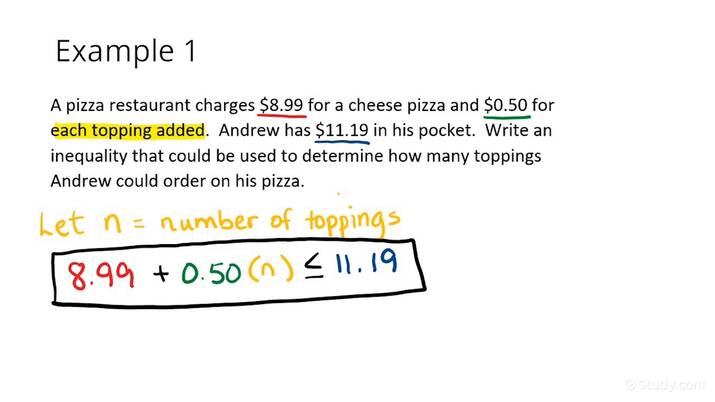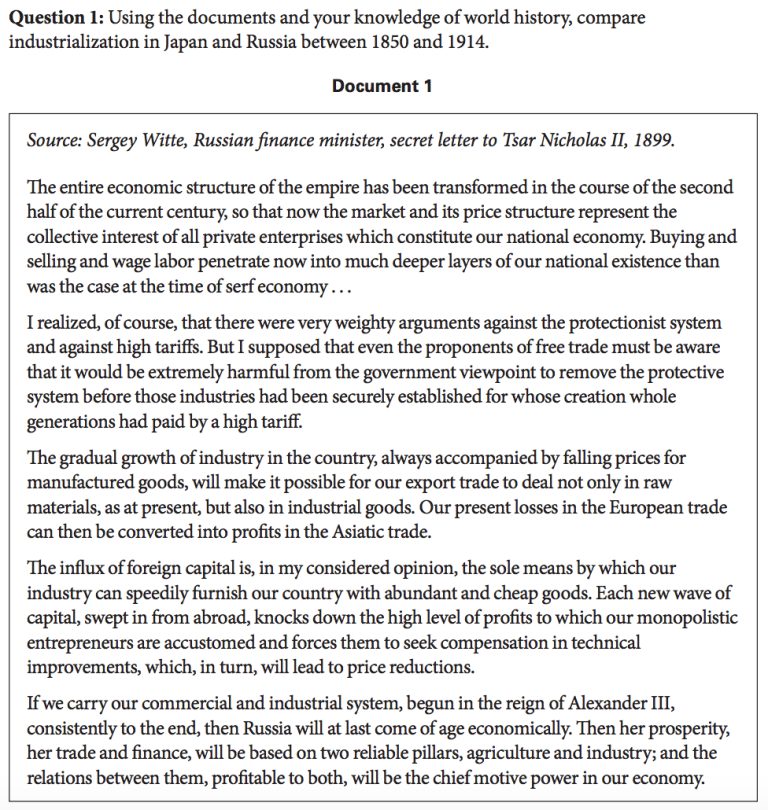Writing An Inequality For A Real World Situation
Writing an inequality for a real world situation is an important skill for anyone to have. Inequalities are mathematical statements that describe a relationship between two quantities. They can be used to model various real world scenarios, such as how much money someone makes, how much time someone has available to do something, or how much of something there is. Inequalities allow us to understand the relationships between these quantities, and can help us make decisions about how to best use our resources. Knowing how to write inequalities for real world situations can help us make informed decisions and can be an invaluable tool for anyone.
Defining Inequality
Inequality is a mathematical concept used to compare two values or expressions. It is denoted with a greater than (>) or less than (<) sign. It is a powerful tool to understand relationships between values and to solve challenging problems in the real world. Inequality can be used to answer questions about economic systems, population growth, cost-benefit analysis, and many other topics.
To create an inequality, one must first identify the two values or expressions that will be compared. It is important to understand the difference between these terms and how they will be used in the inequality. Once the values have been established, the appropriate comparison symbol can be used to write the inequality.
For example, if an economist wanted to compare the current unemployment rate to the U.S.’s historical average, the inequality would look like this:
Unemployment rate > U.S. historical average
In this case, the greater than symbol is used to compare the current unemployment rate to the U.S.’s historical average. If the current rate is higher than the historical average, the inequality is true. If the current rate is lower than the historical average, the inequality is false.
Inequalities can also be used to solve complex problems involving multiple variables. For example, if a company wanted to determine their optimal production level, they could use an inequality to compare their production costs to their total revenue. This can help them determine their most profitable production level.
By understanding how to use inequalities, individuals and organizations can use this powerful mathematical concept to make decisions that will have a positive impact on their business. Inequality is one of the most important mathematical tools available and can be used to analyse and solve real world problems.
Identifying the Real World Situation
Writing an inequality for a real-world situation can be a tricky task. To get started, it’s important to know what an inequality is and how it applies to a real-world context. An inequality is a mathematical statement that uses symbols to compare two values. In the real world, inequalities are used to describe situations where one thing is greater than, less than, or equal to another.
For example, if you wanted to describe the population of a city, you might use an inequality to express the fact that the population is greater than 10,000 people. In this case, the inequality would be written as ‘population > 10,000’.
In order to write an inequality for a real-world situation, you must first understand the context of the situation. Think about the variables involved, the relationships between them, and the meaning of the outcome. For example, if you wanted to express the fact that a student’s grade was greater than or equal to 70, you would use the inequality ‘grade ≥ 70’.
Once you have identified the real-world situation, you can then use the appropriate symbols and values to write the inequality. It’s important to remember that an inequality is a mathematical statement, so it must be written using the appropriate symbols.
In conclusion, writing an inequality for a real-world situation is a process that requires careful consideration of the context. By understanding the variables, the relationships between them, and the meaning of the outcome, you can accurately express the situation using the appropriate symbols and values.
Analyzing the Real World Situation
In order to write an inequality for a real-world situation, it is important to first analyze the situation. This involves breaking down the problem into its parts, identifying the relevant factors, and using those to write an equation or inequality that models the situation. It is important to use a variety of techniques such as equations, graphs, and tables to help visualize and analyze the problem. Additionally, it can be useful to draw diagrams and use logic to help determine the relationships between the different elements. Once the analysis is complete, an inequality can be written to represent the real-world situation. This inequality can then be used to solve the problem. By breaking down a real-world situation into its parts and using a combination of equations, graphs, and logic, an appropriate inequality can be written to model the problem.

Writing the Inequality
Writing an inequality for a real-world situation requires a few steps. First, you must identify the inequality that best describes the situation. Then, you must translate the situation into an expression or equation that uses the appropriate symbols. Finally, you must solve the inequality to determine the result.
Let’s consider a real-world example: Suppose you want to find the number of hours you must work in order to earn a certain amount of money. To solve this problem, you can set up an inequality in the form “hours multiplied by rate of pay is greater than or equal to a certain amount of money.” This inequality is written as h * r ≥ m, where h is the number of hours, r is the rate of pay, and m is the amount of money.
Next, you must solve the inequality. Generally, this involves isolating the variable you want to solve for on one side of the equation and then simplifying the equation with algebraic operations. In our example, you must solve for h, so you can isolate it on one side of the equation by dividing by r on both sides. The result of the equation is h ≥ m/r, meaning that h must be greater than or equal to m/r in order for you to meet your goal.
By following these steps, you can write an inequality for a real-world situation. The key is to identify the inequality that best describes the situation, convert it into an expression or equation, and solve the inequality to determine the result. With this process, you can confidently write an inequality for any real-world situation.
Solving the Inequality
When it comes to writing an inequality for a real-world situation, the ultimate goal is to determine the range of possible solutions. To do this, we must solve the inequality. To solve an inequality, we must first isolate the variable on one side of the inequality sign. After isolating the variable, we can then perform the appropriate operations to both sides of the inequality to eliminate any fractions or negative numbers. Once this is done, the inequality can be solved by either adding, subtracting, multiplying, or dividing both sides of the inequality by the same number.
The solution of the inequality is a range of values that satisfy the inequality. For example, if our inequality is x>2, then the solution is all real numbers greater than 2. If our inequality is x≤3, then the solution is all real numbers less than or equal to 3. Once the solution of the inequality is obtained, it can be used to answer real-world questions.
Writing an inequality for a real-world situation and solving it is a critical skill for students to have. It enables them to better understand the relationship between variables and their real-world applications. Being able to solve an inequality for a real-world situation is an essential part of problem-solving and should be mastered by students of all levels.
Interpreting the Solution
to an Inequality
Writing inequalities for real-world situations is one of the cornerstones of math. Once you’ve completed writing the inequality, it’s time to interpret the solution. This can involve solving for a specific variable, analyzing the solution set, or both. The key to interpreting an inequality is understanding the meaning of the symbols and how they apply to the situation.
The most common symbols in inequalities are “>” (greater than), “<” (less than), “≥” (greater than or equal to), and “≤” (less than or equal to). When reading an inequality, the “>” and “<” symbols denote that one side of the equation is greater or less than the other side, respectively. The “≥” and “≤” symbols denote that one side of the equation is greater than or equal to, or less than or equal to, the other side, respectively.
The solution to an inequality will be a range of numbers. These numbers are the values that satisfy the inequality. For example, the solution to the inequality “x > 5” is x ≥ 6. This indicates that all values of x greater than or equal to 6 satisfy the inequality.
Interpreting an inequality can be challenging but also rewarding. By understanding the meaning of the symbols and being familiar with the solution set, you will be better able to interpret and solve inequalities in a real-world context.
FAQs About the Writing An Inequality For A Real World Situation
1. How do I write an inequality for a real world situation?
Answer: To write an inequality for a real world situation, identify the factors that will be included in the inequality and then use symbols to represent the inequality. For example, if you are given a real world situation involving two numbers, you can use “less than,” “greater than,” or “equal to” symbols to represent the inequality.
2. What symbols can I use to represent inequalities?
Answer: You can use the symbols “<”, “>”, “<=” and “>=” to represent inequalities. The symbols “<” and “>” represent “less than” and “greater than” respectively, while “<=” and “>=” represent “less than or equal to” and “greater than or equal to” respectively.
3. What is the best way to solve an inequality for a real world situation?
Answer: The best way to solve an inequality for a real world situation is to use the appropriate algebraic techniques to solve the inequality. This may involve using the rules of operations (addition, subtraction, multiplication, and division) and combining like terms. Additionally, you may need to use properties of inequalities, such as the transitive property and the addition and multiplication properties, to solve the inequality.
Conclusion
Writing an inequality for a real world situation is a powerful tool for understanding the relationship between different variables and how they interact with each other. Inequalities can be used to describe a variety of scenarios, from budgeting to understanding the behavior of a population. By learning how to write an inequality, students can gain a better understanding of the real world and how to use mathematics to solve problems.





